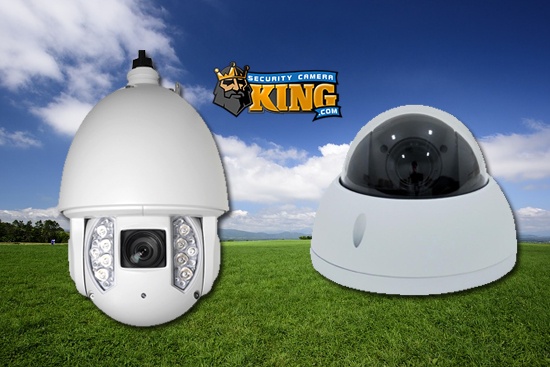Best IP Camera System
Security Camera King is a leader in the industry, we often get asked “What is the best IP Camera system out there?”
It’s a tough question, but an important one. The reason it could be considered a hard nut to crack is because there really isn’t just one answer. For sure, we can tell you that if you’re using a very old COAX based DVR system- its probably time for an upgrade to new Equipment. This might be less true if your COAX DVR system is much much newer.
If your system is older than 5 years however, The best IP camera system for you would be anything newer than the old DVR setup you’re utilizing. Why is this the case?
The Device commonly known has a DVR, is not a new piece of technology by any means. Video recording has been around for a long time, even in surveillance. Completely analog systems recording to analog formats like tape were around first. At some point though, this changed over to recording analog video to digital media like blank cds and dvds, and eventually hard disk drives. Thus around 1999, the DVR became the more common format of CCTV station.
DVR stands for Digital Video Recorder. The DVRs we’re discussing are used in the CCTV industry to record television show episodes. CCTV cameras recorded via DVRs are not IP, ethernet cable-only CCTV cameras, but CCTV cameras using Coaxial -or COAX- cables. DVRs convert video data from the Recorder into a format suitable for transmission to your display. The DVR does all of the video processing inside the DVR. DVRs require at least two COAX cables, as well as power for the camera and the DVR, to operate properly. Because of this, cabling may be more difficult in tight settings.
IP cameras can be used with some more modern hybrid DVRs, but will have their full features and use case expanded to maximum capability when used with a high quality NVR, preferably of the same brand as the IP Cameras.
Although NVRs are not able to work with COAX cameras from a DVR-based installation, IP cameras and NVRs have a number of advantages. IP cameras, on the other hand, use something called Power over Ethernet, or POE for short. This means that the very same cable that delivers data to the NVCR or to the network it is on will also supply power to the camera. Since COAX cameras required more than one cable to operate, IP cameras should be able to function with less cable.
IP cameras are computer devices that process their own video data and send it pre-encoded to the recorder. This is different than a COAX camera, which transmits raw video data over to the DVR to be transcoded within the DVR itself. What this means is that the NVR’s CPU is free to perform other tasks rather than being burdened with the task of encoding video for the DVR. AI work, for example, or decoding local video for playback and live viewing.
This also means you, the user have more dynamic control over each camera. With Plug and Play type setups likely you’ll be performing these settings changes from the NVR’s menu, but, know that because each IP camera is its own computer device they are each separately accesible from their web interfaces via browser and IP address, This means more granular level of settings change and access is available almost universally across IP cameras as compared to their COAX counterparts.
NVRs and their configurations do generally require some light networking knowledge to operate effectively. More advanced setups will require more knowledge but not to worry, as security camera king also carries the newest in plug-and-play NVR solutions for residential and small business.
NVRs generally come in two classes, onboard POE (plug and play) and Dual NIC (more manual / advanced user setup).
The onboard POE NVR’s supply both power and network connectivity to their IP cameras by way of power over ethernet built right into the NVR itself. That’s what Onboard POE means, and what POE stands for (power over ethernet). The cameras will power on, connect, set themselves up, and present visual on the NVR for brand new setups with a plug and play approach.
However more advanced users can take advantage of larger NVR systems with more cameras and more complicated security goals using larger capacity NVRs which do not feature onboard POE, but instead use dual, segregated network ports to split connectivity across multiple networks.
IP Camera systems also feature the highest image quality thresholds with cameras reaching 4k and up, with framerates of 15FPS and higher at 4k. Most COAX cameras which can approach this resolution are limited greatly by their framerates.
All of our Camera Systems, IP NVRs with or without onboard POE and even our newer COAX DVR systems all feature some amazing options. Firstly know everything we carry is backed by a warranty, and for most items its 3 years. (some items are 2, so be sure to check the warranty page or ask a sales pro to be sure).
All of our CCTV systems feature lifetime tech support, for assistance with troubleshooting.
All of our Camera systems feature remote viewing, and a free app for viewing the cameras from your pc, mac, or mobile device. (For Macs this is version dependent)
Don’t hesitate to give our sales pros a call because the only way to surely know what the Best IP Camera system is is to talk about your specific security needs, goals and concerns with someone who knows what will get the0 job done, at a price that makes sense!
We are Security Camera King!
Related: Resolution, and why does it matter?
Related: What are active deterrence cameras?
Find Us On: Facebook | Twitter | YouTube












